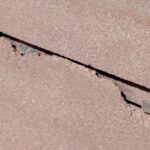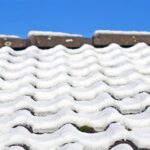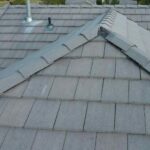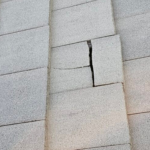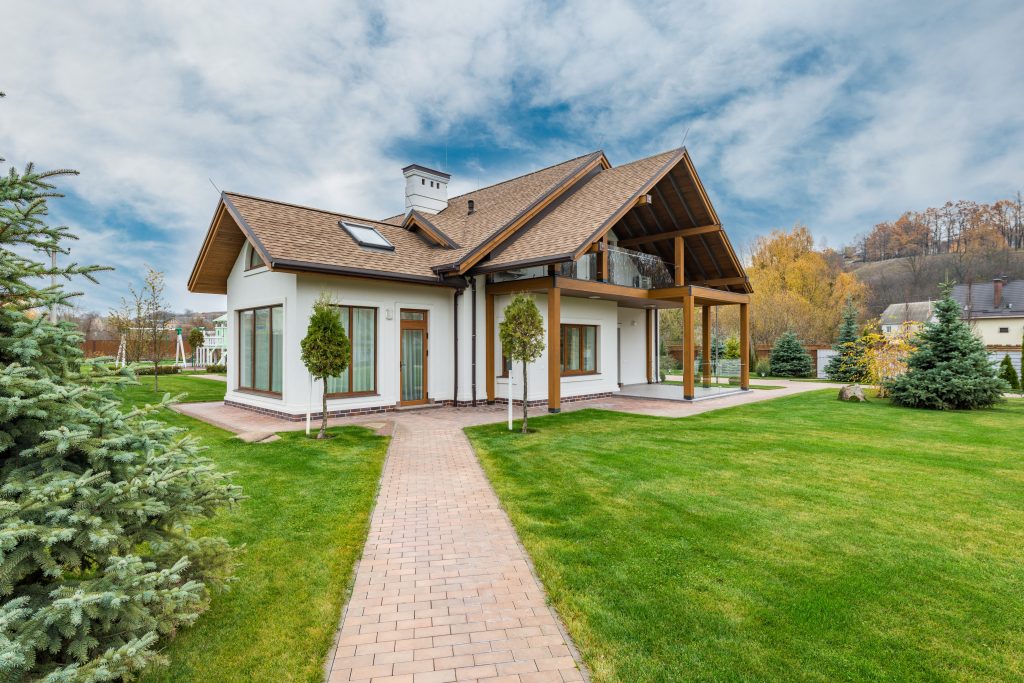
Major hail damage is the last thing you want to see on your roof, which is why it’s a smart move to invest in roofing shingles for hail protection. Hailstones, particularly those the size of softballs, can cause significant damage to your home, especially if you have the wrong type of shingles installed. Choosing hail or impact resistant shingles is a huge game changer when it comes to minimizing damage on your roof and avoiding costly repairs.
With the various types of shingles available on the market, it’s important to do your research to find the best type of roofing shingles against hail. In this article, I’ll be comparing the different types of shingles and their hail resistance to help you make an informed decision.
What is the Best Type of Shingles for Hail Protection?
Hail is a common factor that can cause severe damage to your property’s roof. When it’s hail season in Colorado, hailstones can cause dents, cracks, and holes on houses and roofs. The best way to protect your roof from hail damage is by using the best-suited roofing shingles for your home with high impact-resistant capabilities. The best type of shingles for hail protection are those with a class 4 rating.
Superb Roofers in Aurora, CO

Classes of Shingles and their Hail Resistance
Roofing shingles for hail protection are classified based on their ability to withstand the impact of hailstones without sustaining damage. They go through rigorous testing to assess their performance in simulated hailstorm circumstances. The most common classification system used for hail resistance is the UL 2218 standard, established by Underwriters Laboratories.
To replicate the impact of hailstones in various situations, steel balls of differing sizes are shot at the shingles at various speeds and angles. The classification or level is then determined based on their impact resistance. The following are the classes and types of shingles for hail protection based on their resistance to hail damage:
Class 1 shingles
Class 1 level resists cracking when hit twice in the same spot by a steel ball 1.25” in diameter. This is the lowest level of hail resistance.
Class 2 shingles
This class resists cracking when hit twice in the same spot by a steel ball 1.50” in diameter. Class 2 shingles offer a higher level of hail resistance compared to Class 1.
Class 3 shingles
Class 3 shingles resists cracking when hit twice in the same spot by a steel ball 1.75” in diameter. Class 3 shingles provide a moderate level of hail resistance.
Class 4 shingles
Class 4 shingles resist cracking when hit twice in the same spot by a steel ball 2.00” in diameter. Shingles classified as Class 4 provide the greatest protection against hail damage and are considered the most hail-resistant roof material.
It’s crucial to remember that the hail resistance rating does not ensure total immunity from hail damage. Instead, it describes the shingle’s capacity to endure strikes from hailstones of a specific size without suffering serious damages.
Even with class 4 shingles for hail protection, damage can still occur from extremely violent hailstorms or from other causes, such as the age of the shingles and the state of the roof.
Types of Roof Shingles
While class rating is a significant factor to consider, it is equally important to note that there are several types of shingles for hail protection, all having pros and cons depending on your roof type and roofing needs. Here are some commonly used shingle options for hail protection:
Asphalt shingles
These are the most popular type of roof shingles and are made from a mixture of asphalt and fiberglass. They are affordable, easy to install, and come in a wide range of colors.
When it comes to shingles for hail protection, Class 4 asphalt shingles are the best hail resistant shingles for homeowners looking for durable but affordable impact resistant roofing material.
Metal shingles
These are made of steel, copper, or aluminum and are highly durable. Tile shingles are made of clay or concrete and are known for their durability and longevity.
However, it is worth highlighting that not all metal shingles are created equal. The thickness of the metal, durability, and the shape of the shingle can affect its hail resistance. It’s also important to note that metal shingles are more expensive than asphalt shingles, so they may be a good choice of shingles for hail protection but not be the best option for homeowners on a budget.
Slate shingles
These are made of natural stone and are the most expensive type of shingle. They are renowned for their elegance, durability, and timeless beauty. For their standing as shingles for hail protection, Slate shingles may have a Class 3 or 4 hail rating, but they are still susceptible to cracking or breaking from large hailstones.
To ensure good resistance to hailstone impact, slate shingles should be cut at a proper thickness. If not, they may not be able to provide the best protection against hail damage.
Tile Shingles
Tile shingles are made of clay or concrete and are known for their durability and longevity. They are an excellent option for homeowners who want a roof that can withstand severe weather conditions, including hail.
Most tile shingles have a rating of 3 or 4, which means they are great quality shingles for hail protection. However, it’s important to note that tile shingles are heavy, so they may not be suitable for all types of roofs.
Factors to Consider When Selecting Shingles for Hail Protection
Now that you have a better understanding of the different types of shingles for hail protection, it’s important to consider other factors when choosing the right shingles against hailstorm damage in Aurora, Colorado.
- Hail Frequency and Severity: Aurora, Colorado is located in an area that is prone to hailstorms. It’s important to choose shingles that can withstand the frequency and severity of hailstorms in your area.
- Roof Pitch: The pitch of your roof can impact the impact resistance of your shingles. A steeply pitched roof may be better suited for metal shingles, while a lower pitched roof may be better suited for asphalt shingles.
- Installation Quality: The quality of the installation can impact the overall hail resistance of your shingles. Be sure to choose a reputable roofing contractor who has experience installing hail-resistant shingles.
- Insurance Requirements: Some insurance companies may require a certain level of hail resistance for your shingles in order to qualify for coverage. Be sure to check with your insurance provider before choosing shingles.
Cost Comparison of Shingle Types for Hail Protection
Asphalt shingles are the most affordable type of shingle, with an average cost of $5 per square foot. Metal shingles are significantly more expensive, with an average cost of $12 per square foot.
Tile shingles are even more expensive, with an average cost of $20 per square foot. Slate shingles are the most expensive type of roofing shingles for hail protection with an average cost of $30 per square foot.
Installing Hail Resistant Shingles
While hail resistant shingles provide protection from hailstorm damage, a huge part of your roof’s protection depends on proper installation. Here are some tips to ensure that your roof shingles are installed the best way possible to prevent damages:
- Hire a Professional: It’s recommended to hire a professional roofing contractor experienced in installing hail-resistant shingles. They will have the necessary expertise and knowledge to handle the specific requirements of these shingles for hail protection.
- Proper Underlayment: Ensure that the appropriate underlayment is installed before laying the shingles. The underlayment acts as an additional barrier against moisture and helps enhance the overall durability of the roof.
- Follow Manufacturer Guidelines: Adhere to the manufacturer’s instructions and guidelines for installing the hail-resistant shingles. This includes using the recommended nails, fasteners, and installation techniques specified by the manufacturer.
- Ventilation and Flashing: Pay attention to proper ventilation and flashing installation to prevent moisture buildup and potential leaks. Proper ventilation helps to regulate temperature and moisture levels within the attic space.
Which Shingle Type is Best for Hail Protection
When it comes to hail protection, choosing higher class rating shingles such as Class 3 and Class 4 work best in withstanding hail impacts without sustaining a lot of damage.
Properties located in hail-prone areas such as Aurora, Colorado can greatly benefit from using these hailstone resistant shingles to ensure the safety of their home and less damage on their roofs. The better the roof protection, the less chance for more severe hailstorm damage such as leaks and costly repairs or replacements.
Consult with a trusted roofing contractor like Bjorn’s Roofing for expert advice and professional services for your shingle installation and roofing needs. We’ll help you choose the best type of shingles based on your specific needs, budget, and area.
Latest Posts
Related: how to identify hail resistant shingles, hail resistant shingles cost, class 3 vs class 4 shingles, sq ft durability hail resistance, shingle roof, roof repair, hail damage repair, what is a hail-resistant roof, impact resistant shingles, durability hail resistance special types
